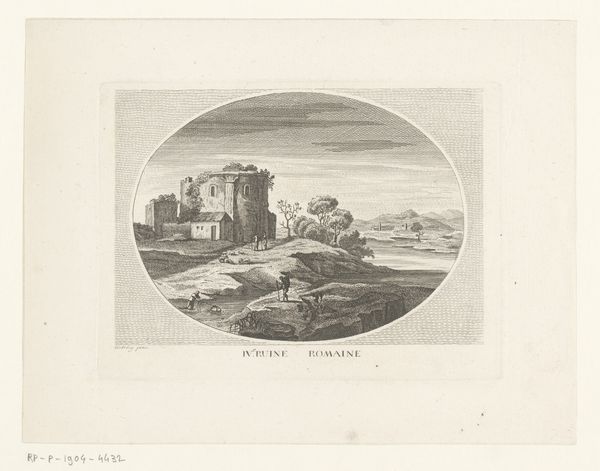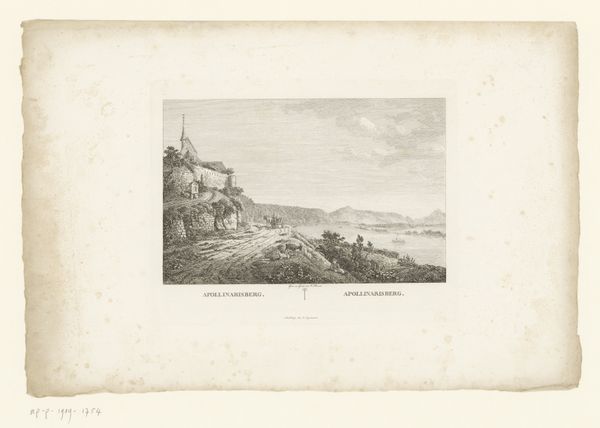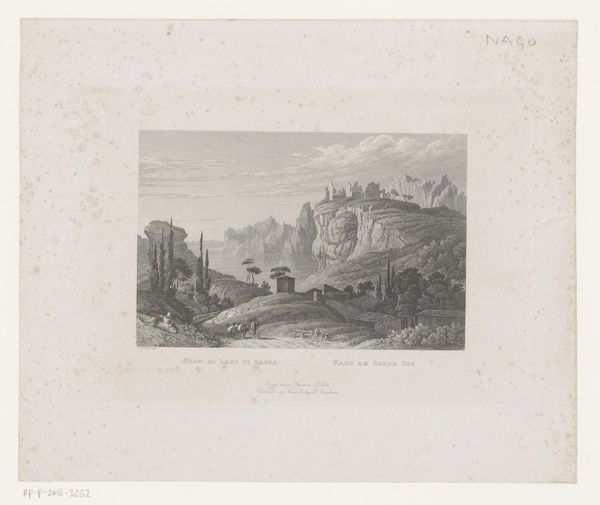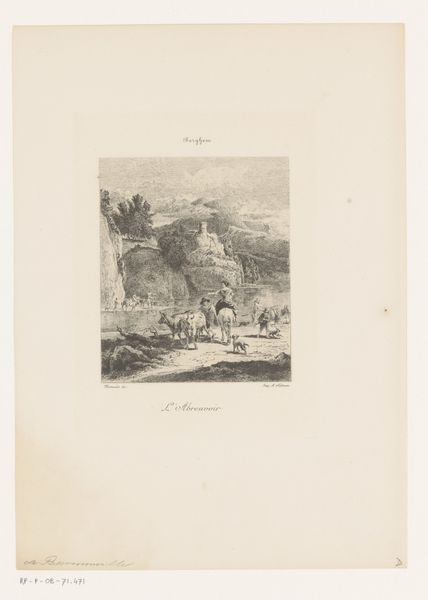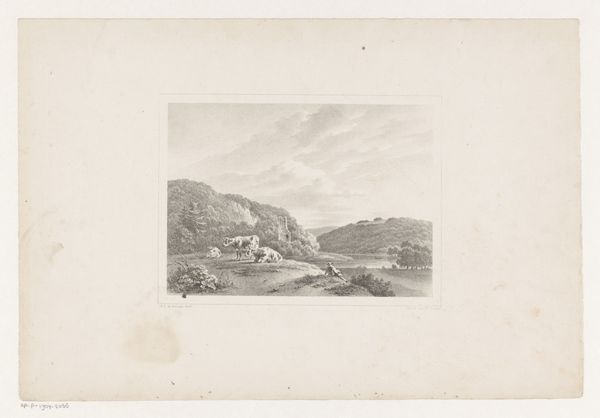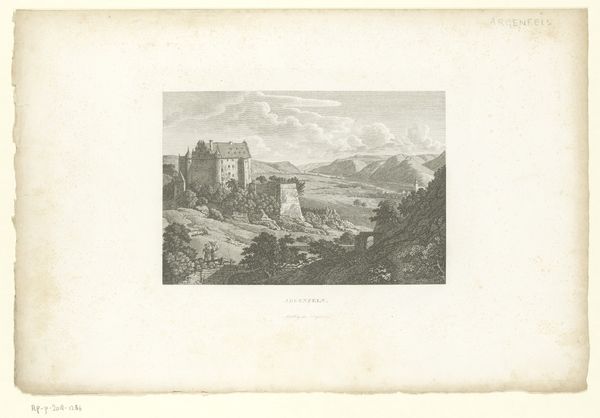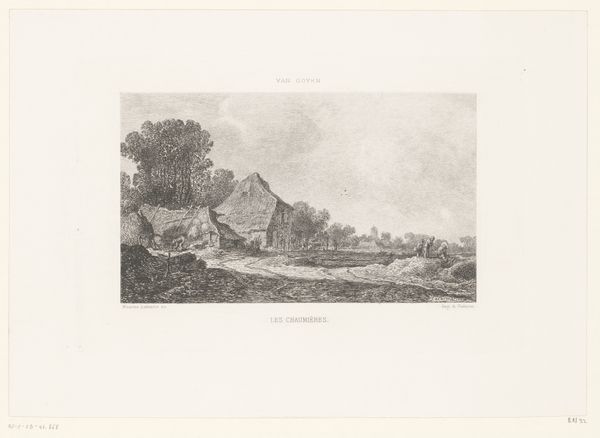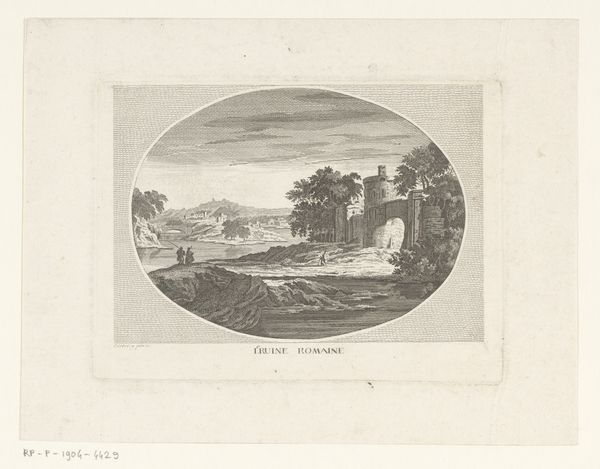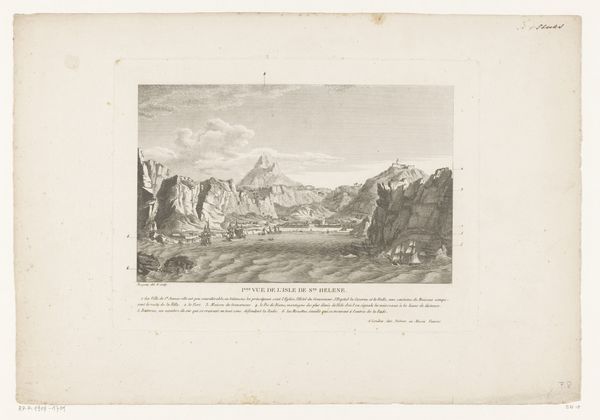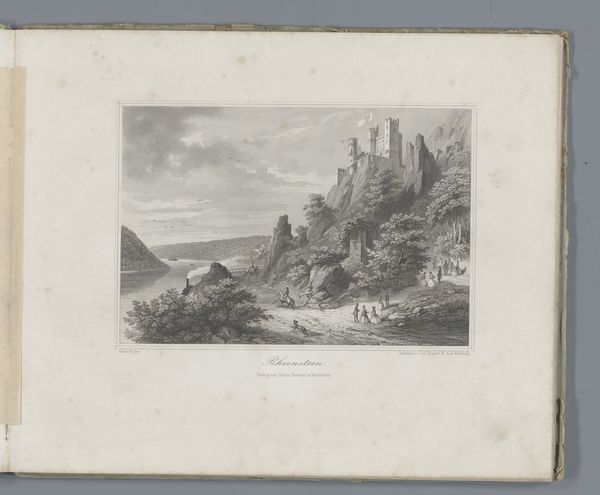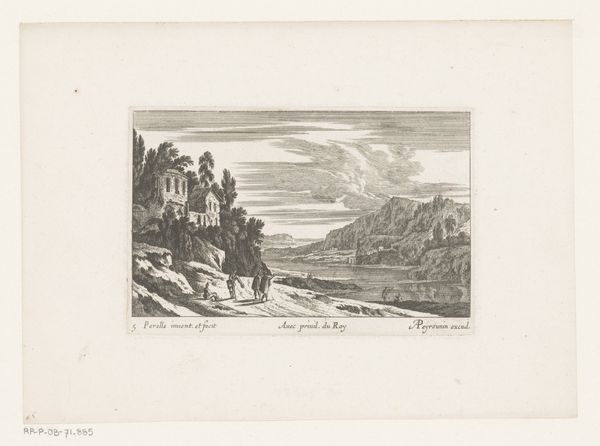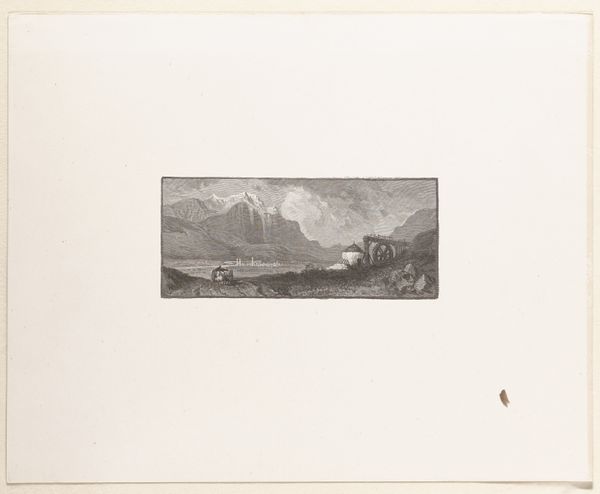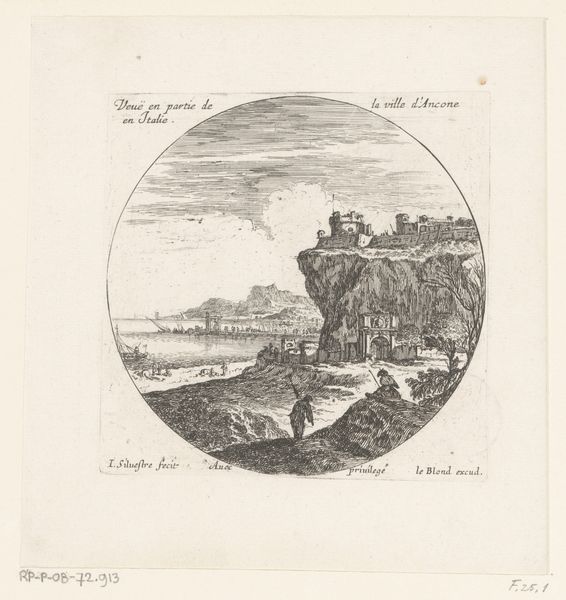
print, engraving
# print
#
landscape
#
romanesque
#
history-painting
#
engraving
#
realism
Dimensions: height 123 mm, width 165 mm
Copyright: Rijks Museum: Open Domain
This print, "Roman Ruin in a River Landscape," was crafted by an anonymous artist using etching techniques on paper. The etcher would have covered a metal plate with a waxy, acid-resistant ground, then scratched an image into it with a sharp needle. Immersed in acid, the exposed lines would bite into the plate, allowing for finely detailed images and subtle gradations of tone. The network of fine lines creates a contrast between light and shadow, defining the texture of stone and foliage. The effect resembles a detailed pen-and-ink drawing. Prints like this played a crucial role in disseminating knowledge and aesthetics. They made images accessible to a broad audience, democratizing art. But consider also the labor involved: from the tradesperson preparing the plate, to the printing press operator, each impression is a testament to collaborative work. By appreciating both the technical process and cultural context, we gain a deeper understanding of the image and its impact. This challenges traditional distinctions between fine art and craft.
Comments
No comments
Be the first to comment and join the conversation on the ultimate creative platform.
